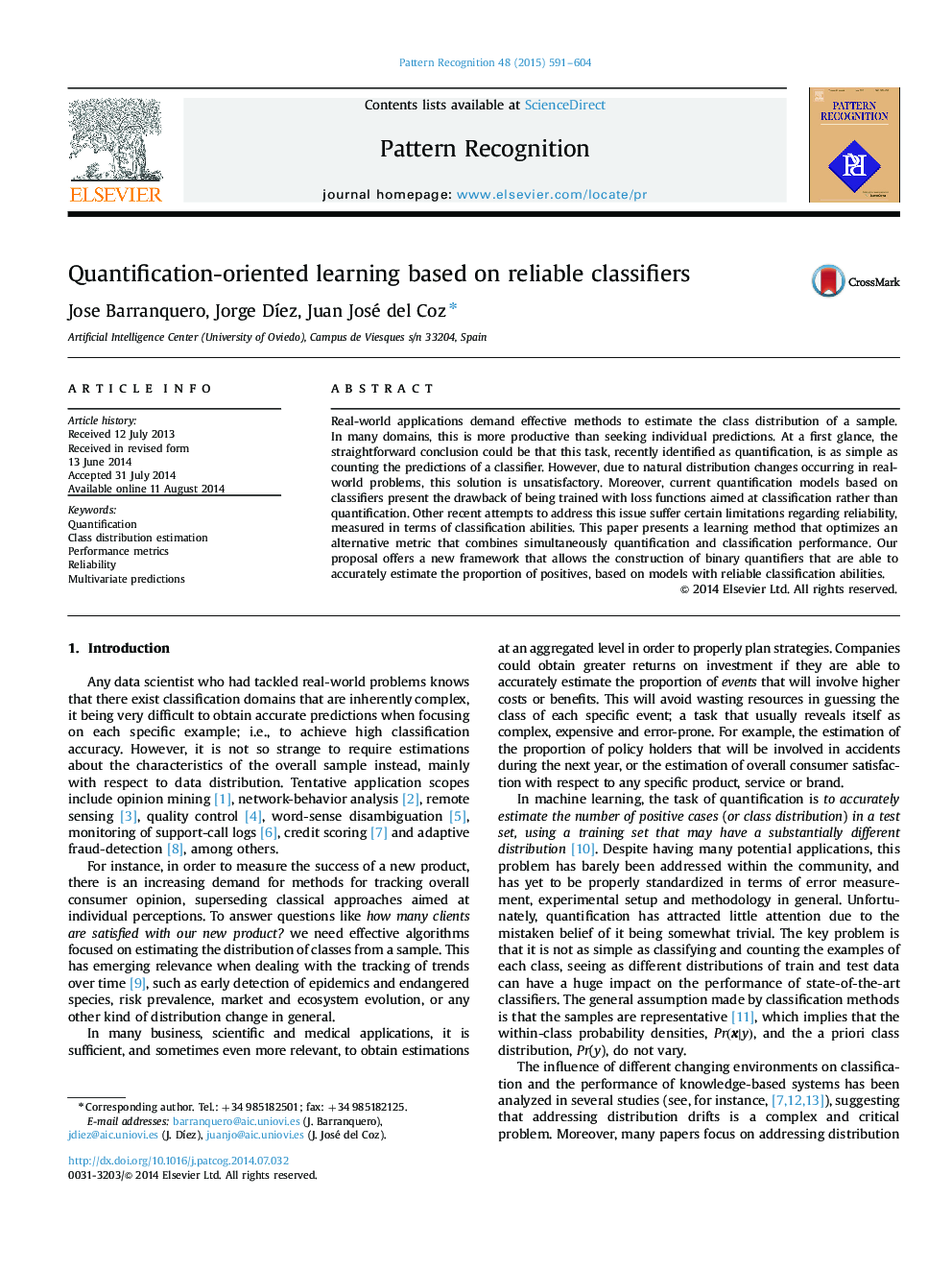| Article ID | Journal | Published Year | Pages | File Type |
|---|---|---|---|---|
| 530017 | Pattern Recognition | 2015 | 14 Pages |
•This paper studies the first quantification-oriented learning approach.•We implement the first learning method that optimizes a quantification metric.•We propose a new metric that combines quantification and classification.•We compare our proposal with current quantifiers on benchmark datasets.•Our method is theoretically well-founded and offers competitive performance.
Real-world applications demand effective methods to estimate the class distribution of a sample. In many domains, this is more productive than seeking individual predictions. At a first glance, the straightforward conclusion could be that this task, recently identified as quantification, is as simple as counting the predictions of a classifier. However, due to natural distribution changes occurring in real-world problems, this solution is unsatisfactory. Moreover, current quantification models based on classifiers present the drawback of being trained with loss functions aimed at classification rather than quantification. Other recent attempts to address this issue suffer certain limitations regarding reliability, measured in terms of classification abilities. This paper presents a learning method that optimizes an alternative metric that combines simultaneously quantification and classification performance. Our proposal offers a new framework that allows the construction of binary quantifiers that are able to accurately estimate the proportion of positives, based on models with reliable classification abilities.
